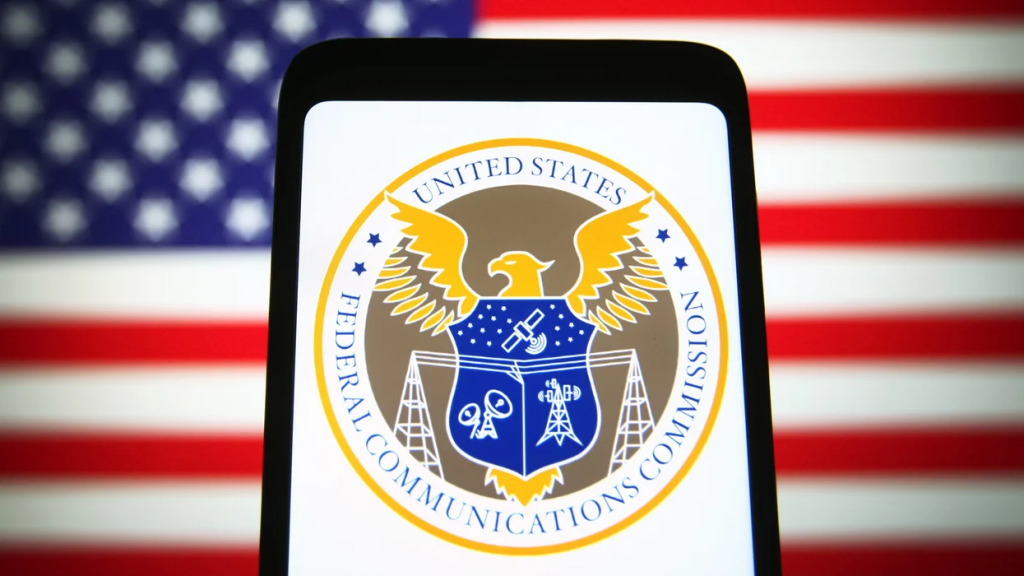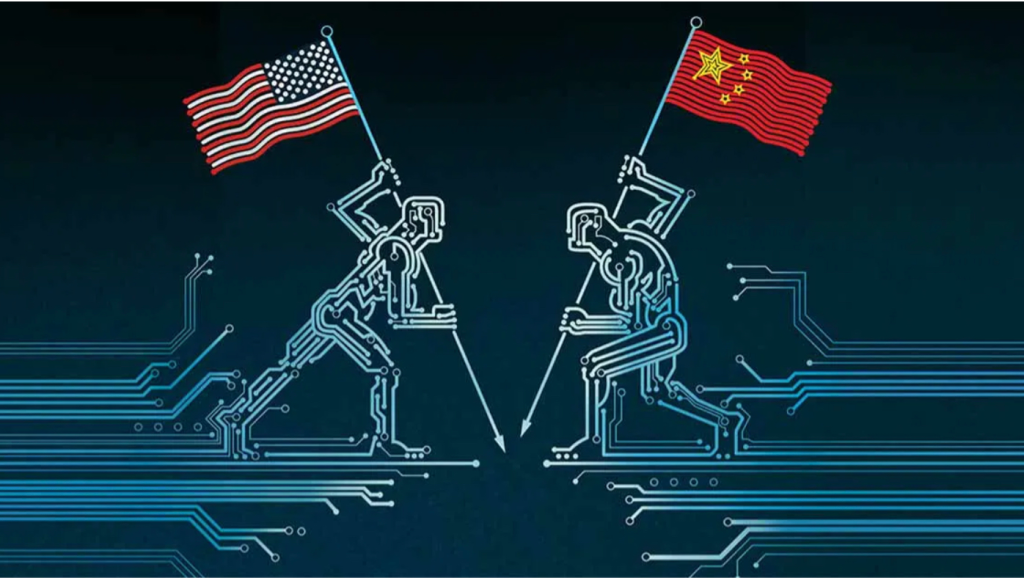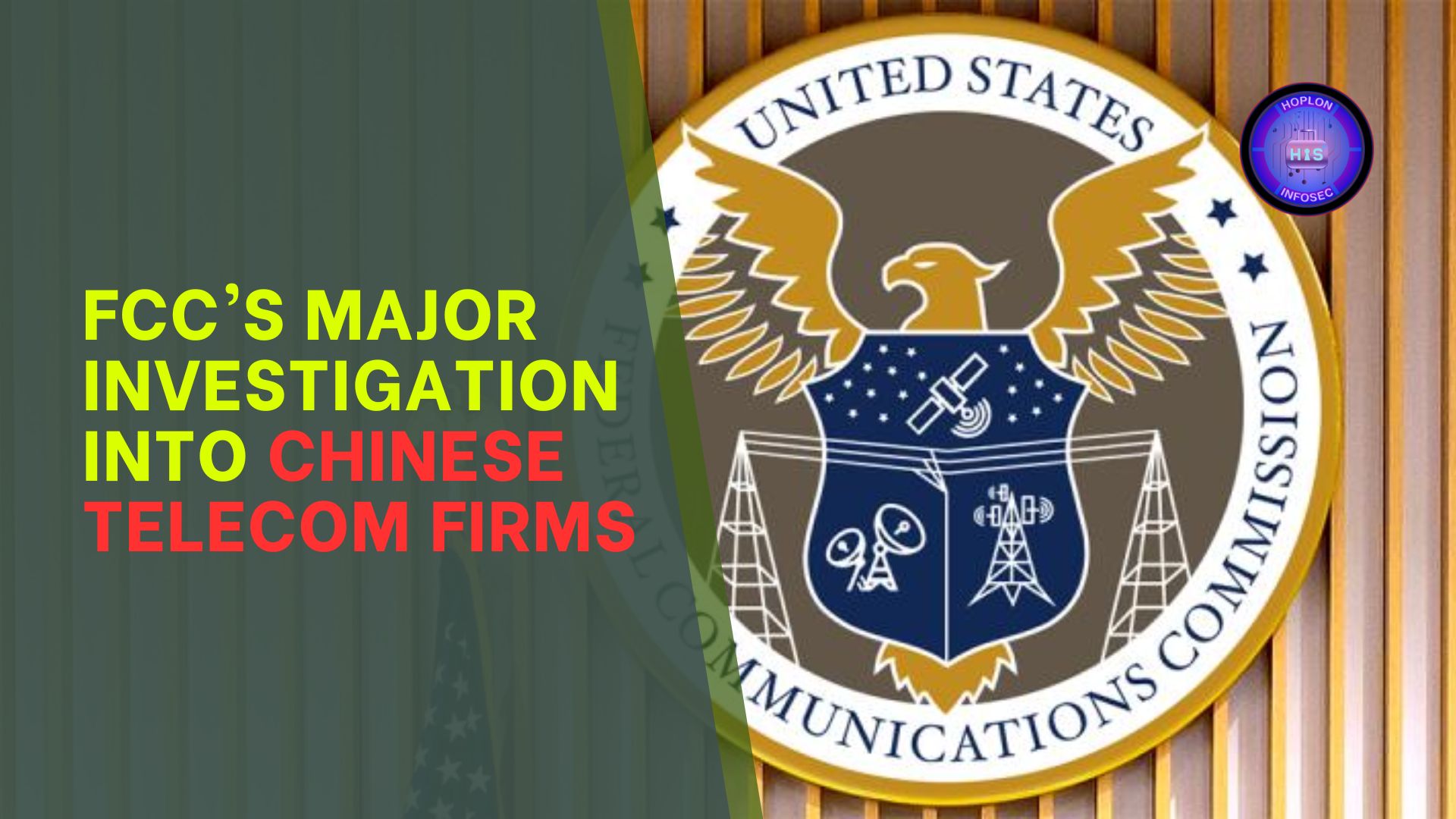The Federal Communications Commission (FCC) has recently embarked on a significant investigation targeting nine Chinese technology and telecommunications companies. This probe is designed to uncover whether these entities are finding ways to bypass long-standing U.S. restrictions. In this blog post, we will examine the background of these regulatory measures, the details of the ongoing investigation, and the potential implications for U.S. national security and the telecommunications industry.
Background: U.S. Concerns Over Foreign Technology

For years, U.S. authorities have expressed increasing concern over the involvement of certain Chinese firms in critical sectors of the national communications infrastructure. This unease primarily stems from fears that these companies, many of which have close ties to the Chinese Communist Party (CCP), could be used as conduits for espionage, cyberattacks, or other actions that might compromise U.S. national security.
The FCC’s previous actions have already put these concerns into sharp focus. In earlier measures, the commission compiled a Covered List—a database of telecommunications equipment and services that are considered a security risk. Products on this list, identified by unique technology codes, are prohibited from being sold in the U.S. market due to the risks they might pose to critical infrastructure. Despite these prohibitions, there has been growing speculation that some firms may try to work around these restrictions by conducting business on private or unregulated channels.
The Investigation: Scope and Objectives
On March 21, 2025, FCC Chairman Brendan Carr announced a new phase in the agency’s efforts. The announcement stated that the commission had issued Letters of Inquiry and at least one subpoena to the companies on the Covered List. These measures aim to determine whether these firms are still maintaining active operations within the United States despite previous bans.
This investigation marks a pivotal moment, as it is the first major initiative led by the FCC’s newly established Council on National Security. By involving a specialized council composed of representatives from various FCC bureaus and offices, the commission emphasizes the threat’s seriousness and the need for a coordinated, cross-agency response.
Chairman Carr was explicit about the agency’s determination: “We have reason to believe that, despite those actions, some or all of these Covered List entities are trying to make an end run around those FCC prohibitions by continuing to do business in America on a private or ‘unregulated’ basis. We are not going to look the other way.” This statement underscores the administration’s resolve to protect the U.S. communications infrastructure from potential risks from foreign adversary state-backed actors.
A Closer Look at the Targeted Companies
The investigation is aimed at nine major companies, each of which has been previously flagged for its potential risks. These companies include:
Huawei Technologies and ZTE Corporation
Two of the largest telecommunications equipment manufacturers in the world have been under close scrutiny for years. Their products and services have been repeatedly linked to national security concerns.
Hangzhou Hikvision Digital Technology and Dahua Technology Company
Known primarily as providers of surveillance technology, these companies have been associated with systems that might be used to facilitate mass surveillance and infringe upon privacy rights.
Hytera Communications
A significant maker of communications equipment, Hytera is under investigation for reasons similar to those of its counterparts.
China Mobile International USA, China Telecom (Americas), Pacifica Networks/ComNet, and China Unicom (Americas)
These companies providing telecommunications services are also being closely examined. Their inclusion in the investigation highlights the broad reach of the FCC’s concerns—from hardware to services directly connecting millions of Americans.
By targeting these companies, the FCC aims to close any loopholes that allow them to operate in the United States, thereby mitigating the risks associated with unauthorized or unregulated equipment entering the national communications network.
The Role of the FCC’s Council on National Security

The establishment of the Council on National Security represents a significant step forward in the FCC’s approach to safeguarding the nation’s communications infrastructure. This council brings together experts from eight different bureaus and offices within the FCC, ensuring that the investigation benefits from a wide range of expertise and perspectives.
The council’s creation directly responds to the evolving nature of modern threats. As technology advances, so do the methods employed by foreign entities attempting to infiltrate or undermine critical systems. The council is tasked with identifying not only the current scope of these firms’ activities but also anticipating future tactics that could be employed to circumvent U.S. regulations.
Chairman Carr emphasized the need for swift and decisive action: “The FCC, working through our new Council on National Security and in coordination with partners across the Federal government, will identify the scope of their ongoing activities and move quickly to close any loopholes that have permitted untrustworthy, foreign adversary state-backed actors to skirt our rules.” This proactive approach is designed to ensure that the United States remains a step ahead in the complex game of cybersecurity and international trade regulations.
Understanding the FCC’s Covered List and Its Impact
The FCC’s Covered List is a vital tool in the agency’s strategy to protect national security. It is a registry of communications equipment and services flagged as potentially harmful. Products on the list are identified by specific technology codes, some of which include:
Optical Carrier/Fiber Connections (Code 50)
These codes are critical because fiber-optic networks form the backbone of modern communications. Unauthorized equipment could disrupt these networks, leading to significant vulnerabilities.
Cable Modem Technologies (Codes 40-43)
Cable modems are integral to high-speed internet access, and any compromise in these systems could have widespread consequences.
Wireless Transmission Systems (Code 70)
Wireless systems used in various aspects of critical network infrastructure that do not adhere to FCC guidelines pose a risk of interference and cyberattacks.
Including these codes in the Covered List ensures that all related products are subject to strict regulatory oversight. Companies that violate these regulations can face severe penalties, including being banned from the U.S. market altogether.
Historically, the FCC has taken a hard stance against companies that attempt to operate outside these rules. Previous decisions have barred these entities from providing telecommunications services in the United States, and the current investigation continues that broader strategy. Network security experts have long warned that unauthorized equipment could lead to vulnerabilities that might enable cyberattacks, espionage, or other forms of surveillance by foreign adversaries.
National Security Implications
At the heart of this investigation lies a fundamental concern for national security. The U.S. government has consistently argued that allowing equipment from these Chinese companies into the nation’s critical infrastructure could create significant security risks. Malicious actors might exploit unauthorized devices to access sensitive information, disrupt essential services, or launch coordinated cyberattacks.
In today’s digital age, the integrity of communications infrastructure is paramount. With millions of people relying on these networks for everything from emergency services to daily business operations, any vulnerability can have far-reaching consequences. Therefore, this investigation is not just about regulatory compliance but about protecting the fabric of the nation’s technological and economic well-being.
The potential ramifications extend beyond the immediate concerns of cybersecurity. There is a broader geopolitical context at play. The relationship between the United States and China has been marked by tension, particularly regarding technology transfer, intellectual property, and national sovereignty. By taking a firm stance against these companies, the FCC is also sending a message to the Chinese government about the limits of its influence in the U.S. market.
Furthermore, the outcome of this investigation could influence future policies on foreign technology companies operating within the United States. Should the investigation reveal significant breaches or loopholes in enforcement, it might lead to a tightening of regulations for Chinese firms and any foreign entity deemed a potential risk. Such a move could have lasting implications for international trade and the global technology market.
The Broader Context: U.S. Regulatory Actions Against Chinese Tech

The current investigation is part of a long series of actions the United States took against Chinese technology companies. Over the past decade, numerous regulatory moves have been made to curb these firms’ influence in the U.S. market. These measures have ranged from trade restrictions to outright bans on selling certain types of equipment.
For instance, previous FCC decisions have specifically barred Chinese companies from providing certain telecommunications services, particularly in areas where their involvement was considered a security risk. These actions are often accompanied by statements from U.S. officials emphasizing the need to protect national security at all costs.
The decision to investigate these companies comes amid high tensions between the United States and China. With both countries vying for dominance in the global technology sector, regulatory measures such as these are seen as crucial battlegrounds. Therefore, the FCC’s actions are not just about preventing potential security breaches but also a strategic move in a more significant geopolitical contest.
In addition to regulatory actions, lawmakers and security experts have called for even more stringent measures. Current regulations may not be sufficient to address the sophisticated methods used by foreign entities to infiltrate U.S. networks. As a result, the FCC’s investigation could serve as a catalyst for a broader overhaul of how the United States handles foreign technology in its critical infrastructure.
Potential Consequences for U.S. Telecommunications and Technology
The consequences could be severe if the investigation uncovered evidence that these companies are circumventing U.S. regulations. There are several potential outcomes:
Imposition of Additional Sanctions and Restrictions
The FCC might impose additional sanctions or restrictions on the implicated companies. These could range from heavier fines to complete bans on operating within the United States. Such actions would directly impact the companies’ ability to do business in one of the world’s largest markets.
Reevaluation of the Regulatory Framework
A finding that these companies have successfully evaded existing rules could prompt a reevaluation of the regulatory framework itself. Lawmakers and regulatory bodies might push for stricter guidelines or even new legislation to close any loopholes allowing foreign firms to bypass restrictions. This could lead to significant changes in how telecommunications equipment is evaluated and approved for use in the U.S.
Global Implications
These regulatory actions could have ripple effects throughout the global technology market. Other countries might look to the U.S. as a model for managing the risks associated with foreign technology companies. In this sense, the outcome of the FCC’s investigation could influence international standards and practices, potentially leading to a more uniform approach to cybersecurity and network integrity worldwide.
The investigation represents both a challenge and an opportunity for U.S. businesses and consumers. On one hand, tighter regulations may lead to higher costs and reduced availability of specific technologies. On the other hand, ensuring that all equipment used in critical infrastructure meets strict security standards could lead to a more resilient and secure communications network. This would be a significant win for national security, even if it means short-term disruptions or adjustments for the industry.
The Role of Collaboration in Addressing Cybersecurity Threats
An essential component of the FCC’s approach is its emphasis on cross-agency collaboration. The new Council on National Security is designed to ensure that expertise from different corners of the agency is brought together to address the multifaceted challenges posed by foreign technology companies. This collaboration is crucial for several reasons.
Complexity of Cybersecurity
Cybersecurity is an inherently complex field. Threats posed by unauthorized equipment or services can range from data breaches to full-scale cyberattacks. No single agency or bureau has the expertise necessary to counter every potential risk. The FCC can more effectively identify and address vulnerabilities by pooling resources and knowledge.
Federal Cooperation
Cooperation with other federal partners is critical. The FCC’s investigation does not occur in a vacuum; it is part of a broader federal effort to protect national security. By working closely with other agencies, the FCC can ensure that its actions are consistent with national policies and that any regulatory changes are coordinated. This integrated approach strengthens the immediate response to potential threats and lays the groundwork for long-term improvements in cybersecurity protocols.
Therefore, the establishment of the Council on National Security is not merely a bureaucratic formality. It is a strategic move that reflects the growing recognition that protecting the U.S. communications infrastructure requires a comprehensive, well-coordinated effort. As threats evolve, so must the strategies and structures designed to counter them.
Looking Ahead: Implications for Policy and International Relations
The outcome of this investigation could have far-reaching implications beyond the immediate scope of telecommunications equipment and services. If the FCC finds that these companies have been circumventing U.S. restrictions, it may set off a chain reaction affecting policy, regulation, and international relations.
Revision of Existing Rules
One potential consequence is the revision of existing rules. If loopholes are identified, the FCC and other regulatory bodies could move to tighten controls, ensuring that similar bypass tactics cannot be employed. This might involve new legislation or regulatory guidelines that impose stricter penalties on violations.
Geopolitical Impact
Additionally, the investigation could influence the broader dialogue around U.S.-China relations. Technology and cybersecurity are increasingly central to the geopolitical competition between the two nations. The FCC’s firm stance could be interpreted as part of a larger strategy to counteract Chinese influence in critical sectors. This may provoke responses from the Chinese government, potentially leading to further trade or technology disputes.
Impact on Industry Stakeholders and Consumers
For industry stakeholders, the investigation reminds them of the need for vigilance and compliance. Whether domestic or foreign, Telecommunications companies operating in the United States must ensure that their products meet stringent regulatory standards; failure to do so could result in penalties and damage a company’s reputation and long-term prospects in the U.S. market.
On the consumer side, while stricter regulations might lead to short-term inconveniences or higher costs, the long-term benefits of a secure communications infrastructure are undeniable. In an era where cyber threats are ever-present, ensuring that the equipment used in critical networks is safe is paramount. Ultimately, these measures are intended to protect the interests of American citizens and businesses, even if they require some adjustments in the short term.
Conclusion: Balancing Innovation with Security
The FCC’s investigation into nine Chinese telecommunications and technology companies indicates the evolving challenges in today’s digital and interconnected world. As these firms face scrutiny over their attempts to circumvent existing U.S. restrictions, the agency is taking decisive action to protect the nation’s communications infrastructure.
By leveraging the expertise of the newly formed Council on National Security and pursuing a coordinated, cross-agency strategy, the FCC is positioning itself to not only address current risks but also to anticipate and counter future threats. This investigation serves as both a reminder and a warning to all companies operating in critical sectors: adherence to U.S. regulations is not optional, and any attempts to evade these rules will be met with robust enforcement measures.
As the telecommunications landscape continues to evolve, the delicate balance between fostering innovation and ensuring national security remains a key policy challenge. The FCC’s actions underscore the importance of maintaining strict oversight over foreign technology companies, particularly those with potential ties to adversarial governments. While the outcome of this investigation is yet to be determined, its implications will undoubtedly resonate across the telecommunications industry and beyond.
For industry experts, policymakers, and consumers alike, this is a moment to reflect on the importance of cybersecurity in an era of rapid technological advancement. As we move forward, continued vigilance, regulatory oversight, and international cooperation will be essential to safeguard the communications networks that underpin our daily lives. The path ahead may be fraught with challenges, but it is also an opportunity to build a more secure, resilient, and trustworthy digital infrastructure for the future.
For more: Cybersecuritynews




